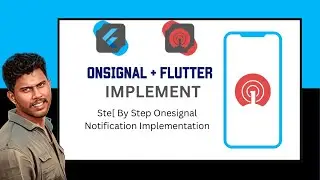How to Fix Admob GDPR issue Step By Step | Admob GDPR Message Android Implementation
Admob UMP sdk implementation| Admob GDPR message Implementation|Admob UMP implentation
Admob GDPR message Create(secondpart) : https://bit.ly/admobgdprmessagecreate
Join Telegram Channel : https://t.me/mrlogcatcher
If you're using AdMob in your Android application and you want to implement a GDPR (General Data Protection Regulation) message, you can follow these general guidelines:
Display a GDPR consent message: When your app starts or when you display personalized ads, show a consent message to the users informing them about the use of cookies and personalized advertising.
Provide clear information: The message should clearly explain that cookies or similar technologies are used to collect data for personalized ads. Inform users that their consent is needed for such data collection and usage.
Offer a choice: Give users the option to consent or decline personalized ads. Make sure to provide an easy-to-understand method for users to manage their preferences.
Store user preferences: Once a user makes a choice, store their preference so that you can honor it throughout their app usage.
Include a privacy policy: Make sure to have a privacy policy that includes information about data collection, usage, and third-party providers like AdMob. Provide a link to the privacy policy within your app and ensure it is easily accessible.
Handle user consent status: Implement code to check and store the user's consent status. AdMob provides APIs for checking the user's consent status, such as ConsentInformation.getInstance().isRequestLocationInEeaOrUnknown().
Use the Consent SDK: Google provides a Consent SDK for Android to help with GDPR compliance. It offers features like consent management, handling consent updates, and serving non-personalized ads. You can integrate the Consent SDK into your app to simplify the process.
Remember to consult legal professionals or review the latest guidelines to ensure compliance with GDPR and any other applicable data protection regulations in your region.
The AdMob GDPR message refers to the consent message or user interface displayed to users in an Android application that integrates the AdMob advertising platform. This message is shown to users to obtain their consent for the collection and use of personal data for personalized advertising purposes, in compliance with the General Data Protection Regulation (GDPR) and other relevant privacy regulations.
The specific content and design of the AdMob GDPR message may vary depending on your app's implementation and user interface, but it generally includes the following elements:
Information about data collection: The message should clearly inform users that data will be collected and used for personalized advertising. It should mention the types of data that may be collected, such as device identifiers, location information, and user interests.
Purpose of data collection: Explain that the collected data will be used to deliver personalized ads tailored to the user's interests and preferences.
Consent options: Provide users with the choice to either accept or decline personalized advertising. Typically, this is done through buttons or checkboxes for opting in or out.
Link to privacy policy: Include a link to your app's privacy policy, which should provide more detailed information about data collection, processing, and user rights. Ensure that the privacy policy is easily accessible to users.
Manage preferences: Offer users the ability to manage their consent preferences in the app settings or through a dedicated consent management interface. This allows users to change their consent status or update their preferences at any time.
It's important to note that the actual implementation of the AdMob GDPR message is your responsibility as the app developer. You can customize the message to match your app's design and user experience while ensuring compliance with applicable privacy laws and regulations.































